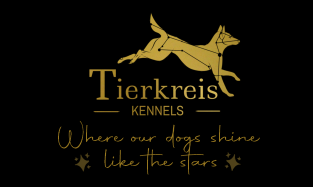The Canadian Kennel Club Standard
recongized 1923
Please note that under the CKC all 4 Belgian Shepherds are considered a single breed.
Origin
In the late 19th century, shepherd-dog fanciers met to determine the type and character of the breed to be known as the Belgian Shepherd Dog. Belgian breeders could agree on the conformation and talents required for a first-class herding dog but they differed on the acceptable coat. So we have a breed with four varieties of coat, each named for the area where that particular coat was favoured. Little was known of the Belgian Shepherd Dog in North America until after World War I when returning servicemen told stories of the breed’s records as messengers and Red Cross dogs.
- Canadian Kennel Club
Temperament
This breed is noted for its intelligence, alertness, and devotion to owner. The Belgian should be observant and vigilant with strangers but not apprehensive, nor should he display viciousness, fear or shyness. With those he knows, the Belgian is affectionate and friendly. In addition to his aptitude for guarding flocks, he displays a certain protectiveness of his owner and his property.
- Canadian Kennel Club
Activity Level
The Belgian has a strong desire to work. This versatile breed excels in herding, obedience, and many other sports. Consistent, regular mental and physical exercise is needed and appreciated.
- Canadian Kennel Club
Height/Weight
Males should be 24-26 inches (61-66 cm) in height and females 22-24 inches (56-61cm) measured at the withers. A light-footed dog of elegant outline, the Belgian is neither bulky nor spindly but is well balanced throughout.
- Canadian Kennel Club
Coat
There are two long-haired varieties – the Tervuren and the Groenendael. The short-coated variety is known as the Malinois, while the rough-coated variety is called the Laeken.
- Canadian Kennel Club
Colour
The long-haired Tervuren varies in colour from rich fawn to russet mahogany to grey with a black overlay. The coat is double-pigmented wherein the tip of each hair is darkened. The face has a black mask and the ears are mostly black. The long-coated Groenendael is completely black or black with small amounts of white on the forechest, tips of the hind toes and frost on the chin or muzzle. The short-coated Malinois also ranges from fawn to mahogany with a black overlay, mask and ears. The rough-haired Laeken may be light fawn to red brown in colour, but grey is also acceptable. Blackening may appear on the muzzle, ears and tail.
- Canadian Kennel Club
Grooming
Grooming requirements vary with the type of coat. Since all varieties carry a soft undercoat as well as the harsher topcoat, it’s important to groom right down to the skin to prevent matting. In any case, a regular thorough brushing will add to the health and beauty of the coat.
- Canadian Kennel Club
